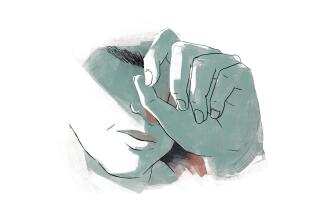Red-Hot Over the Dangers of Smoking : Center Helps People Snuff Nicotine Addiction
I had been working at the Watts Health Center for years when I was struck by the statistics on smoking, particularly as the habit affected the African- American and Latino communities.
Here are some of the statistics that compelled me to begin our Community Tobacco Control Program:
* 430,000 people in the United States die every year from smoking.
* Smoking two packs of cigarettes (a day) . . . shortens your life eight to 10 years.
* Based on a $2 pack of cigarettes, a person who smokes a pack a day spends $60 a month. In 30 years that figure becomes $21,900, money that could have gone for a down payment on a house or a college education.
But that price doesnât include the hidden costs. Smoking costs the California economy approximately $7.6 billion in medical costs and the price of lost productivity--employee smoking breaks, related illnesses and time lost by smokers whose children have frequent eye, ear and upper-respiratory infections.
It seems that Latinas smoke less, while their male counterparts smoke as much as African-American males. And Latinos are more likely to quit than African-Americans if their doctor tells them to.
Our staff generally numbers eight to 15 employees: health educators and a small clerical support staff. Our health educators conduct the stop-smoking classes, which we offer in English and Spanish.
Many of our health educators during the summers and on weekends are teens who weâve enlisted to help counter pro-smoking advertising. A recent report by the Centers for Disease Control indicates that advertisements for tobacco and alcohol occur four to five times more frequently in the African-American community. Because of the thousands of ads promoting tobacco in South-Central, we try to start our programs as early as possible. We keep our program active in the schools, so our teen employees can act as peer group leaders.
Here at the Watts Health Center, we see approximately 700 patients each day. About 40% of them are smokers or children who have asthma because there are smokers around them. Iâve seen low-birth-weight babies whose mothers had smoked during pregnancy.
The average age of the smokers we see is 35; theyâve been smoking since they were 12 or 13. When they come for help, theyâve been smoking 20 years, so they need the ongoing classes to help them stay on track. Our success rate exceeds 30%.
People can quit and immediately begin to regain their health. Most are open about their addiction and keep a sense of humor about the difficulties of kicking the habit.
One 50-year-old patient suffering from hypertension was told by his doctor that he had to stop smoking to control his blood pressure. After a month in the program, he quit smoking. He said his âmomentâ came on the Harbor Freeway. Stuck in traffic one day, he struggled to reach over his âurge breakersâ--beautiful, healthful apples--to get at the cigarettes that he had stashed in his glove compartment. When he realized how addicted he was, he quit.
One of the first people in our program has been smoke-free three years. He has been taken off hypertension medication and has lost weight because he increased his activities. He says he has only one regret: If he had known he was going to live this long, heâd have taken better care of himself.
Anyone in the community or any group can take advantage of the Tobacco Control Program. Our presentations utilize audio-visuals and speakers, all supported by Proposition 99 money. Thereâs no charge.
Information: (310) 639-3068.
More to Read
Sign up for Essential California
The most important California stories and recommendations in your inbox every morning.
You may occasionally receive promotional content from the Los Angeles Times.










